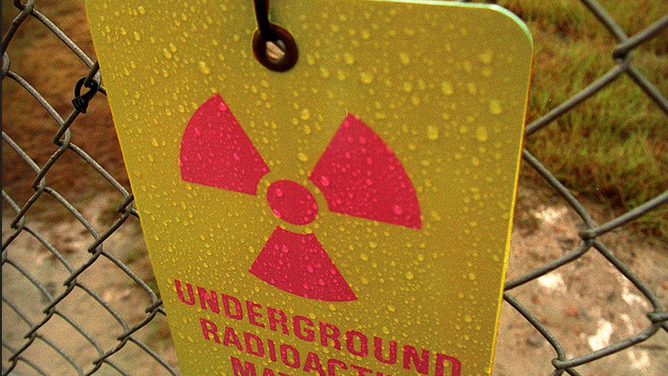Radioactive wasp nests found at former nuclear weapons site
The Savannah River Site is a 310-square-mile-facility in Aiken, South Carolina, which focused on the production of plutonium and tritium end of the Cold War.
Greatest weather disasters: The earthquake and tsunami behind the Fukushima nuclear meltdown
FILE - On March 11, 2011, the most powerful earthquake in Japan's recorded history triggered a tsunami that caused the meltdown of the Fukushima Daiichi nuclear plant.
AIKEN, S.C. – Several wasp nests discovered at a former nuclear bomb-making facility in South Carolina are raising questions as to how the insects were able to come in contact with radioactive material.
According to the U.S. Department of Energy, a routine inspection of the Savannah River Site outside of Augusta, Georgia, discovered at least one of the nests near one of the many tanks of nuclear waste on July 3.
The nest was immediately sprayed with insecticide and then tested for radiation, which turned out to be more than 10 times higher than permissible limits under federal standards.
According to DOE officials, the contamination was classified as "legacy" materials - remnants from historical nuclear operations - and not the result of any recent loss of waste.
"This is not an active radiological release and poses no threat to current operations," the agency said in a statement. "No further action was required in the field."
DID THE NATIONAL WEATHER SERVICE CAPTURE A PHOTO OF BIGFOOT DURING A PENNSYLVANIA STORM SURVEY?

Savannah River Nuclear Weapons Site photo
(MICHAEL MACOR/The San Francisco Chronicle via Getty Images / Getty Images)
"The U.S. Department of Energy is managing the discovery of four wasp nests with very low levels of radioactive contamination that have been found at the Savannah River Site (SRS)," Edwin Deshong, manager of the DOE’s Savannah River Site Office, said in a statement. "The nests do not pose a health risk to SRS workers, the community, or the environment. Work will continue at the SRS where we are fully committed to ensuring the health and safety of the workers and the community."
It remains unclear how the wasps encountered the contaminated materials, though no live wasps were found in the nests.
Officials said the reporting delay was due to a series of internal reviews that were conducted, with the case being compared to previous incidents involving wildlife and radiological materials.
DOE officials did not elaborate on how many instances of contaminated wildlife have been found since the opening of the facility during the Cold War.
RUSSIAN EARTHQUAKE WAVES REACH DEATH VALLEY, SHAKE UNIQUE FISH HABITAT
The Savannah River Site spans more than 300 square miles north of the Georgia–South Carolina border and was considered a critical part of the U.S. nuclear weapons complex starting in the 1950s.
Reactors and processing facilities produced materials such as tritium and plutonium until operations were ramped down in the late 1980s.
Today, the SRS is primarily a cleanup site managed by the Department of Energy’s Office of Environmental Management.
Deer hunts are conducted on the site, which includes sampling for cesium-137 - a byproduct of nuclear reactors and weapons testing.
